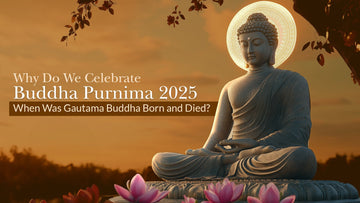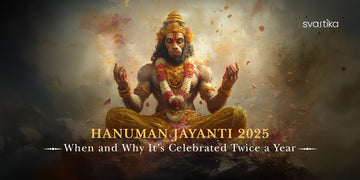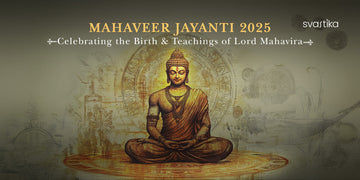Buddha Purnima isn’t just another festival; it’s a moment of peace, reflection, and spiritual connection celebrated by millions across the world. As Buddha Purnima 2025 approaches on May 12, it’s the perfect time to pause and look deeper into the life of Gautama Buddha, the spiritual teacher whose wisdom continues to inspire hearts and minds to this day. But have you ever wondered why this day is so important? Or when exactly was Buddha born and attained Nirvana, also known as ultimate liberation or spiritual awakening?
Whether you’re a practicing Buddhist, a curious learner, or someone simply looking for inner calm, this special day offers meaningful lessons for everyone. From Buddha’s journey as Prince Siddhartha to becoming the “Awakened One,” this article explores why we celebrate Buddha Purnima, what it truly means, and how his life still resonates in our modern world. So, let’s journey back in time and uncover the legacy of one of history’s greatest spiritual guides.
Buddha Purnima 2025: Date & Significance
Buddha Purnima (Monday, May 12, 2025) marks the sacred occasion of the 2587th Birth Anniversary of Gautama Buddha, the founder of Buddhism. This day, also known as Vesak, Vesakha, or Buddha Day, is widely observed by Buddhist communities around the world to honor the birth, enlightenment, and Mahaparinirvana of Lord Buddha.
Buddha Purnima on Monday, May 12, 2025
Purnima Tithi Begins - 08:01 PM on May 11, 2025
Purnima Tithi Ends - 10:25 PM on May 12, 2025
Observed by Buddhist communities worldwide, the day holds special importance in India, particularly in Bodh Gaya, Kushinagar, and Sarnath. Devotees gather at temples to offer prayers, light lamps, chant sutras, and engage in charitable acts, embodying the values of peace and wisdom Buddha imparted.
3D Buddha Wall Art – Elegant Buddha Wall Decor (14 Inch) Meditating Black Buddha Statue (17 Inch)
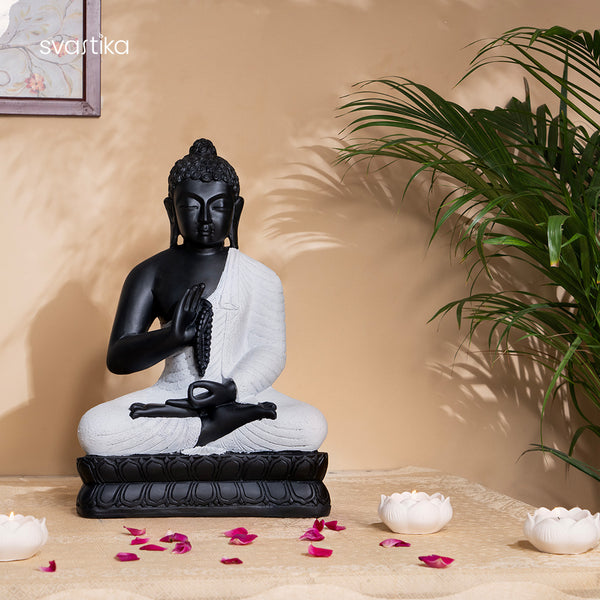
What Is Buddha Purnima?
Buddha Purnima, celebrated on the full moon day of the Vaisakh month, marks three key milestones in the life of Gautama Buddha his birth, enlightenment, and death (Mahaparinirvana). This makes the occasion deeply significant for millions of Buddhists worldwide. Also known as Gautama Buddha Jayanti, Vesak Festival, or Vesak Day, it honors his journey from prince to spiritual teacher. The word "Purnima" means "full moon," and since all major events of Buddha’s life occurred on this day, it holds special spiritual meaning. More than a remembrance, Buddha Purnima is a time to reflect on his timeless teachings and wisdom.
When Was Gautama Buddha Born and Died?
Gautama Buddha was born in 563 BCE in Lumbini, which is now part of modern-day Nepal. He was born into a royal family, with his father, King Suddhodana, hoping that his son would follow in his footsteps as a great ruler. However, after seeing the harsh realities of life, including aging, sickness, and death, Siddhartha (his given name) chose to leave his royal comforts in search of a deeper truth. At the age of 29, he renounced his life of luxury and began his journey as an ascetic, seeking enlightenment.
After years of meditation and self-discipline, Siddhartha attained enlightenment under the Bodhi tree in Bodh Gaya, India, and became known as Buddha, which means "the awakened one." The essence of Buddha’s preachings lies in understanding suffering, its causes, and the path to overcoming it. His teachings form the foundation of Buddhism and continue to guide millions toward inner peace and wisdom.
Buddha lived for around 80 years and died in 483 BCE in Kushinagar, India, attaining Mahaparinirvana (final nirvana). Both his birth and death occurred on the full moon day, which is why Buddha Purnima is such a spiritually rich and significant occasion.
Where is Buddha Purnima celebrated in India, and in which state? & Abroad
Where is Buddha Purnima celebrated in India? The festival is especially prominent in states such as Bihar, Uttar Pradesh, and Maharashtra, where major Buddhist sites and temples host large gatherings. So, if you're wondering Buddha Purnima is celebrated in which state, these are the key regions. Activities often include community prayers, vegetarian meals, donation drives, and cultural programs.
Internationally, countries like Sri Lanka, Thailand, and Myanmar mark the day with equal reverence. In Thailand, for instance, people participate in candlelit processions and make offerings to monks. Similarly, in Sri Lanka and Myanmar, almsgiving, temple visits, and acts of compassion define the day's observance. While the customs may vary, the universal message remains rooted in Buddha’s path to enlightenment.
Why Do We Celebrate Buddha Purnima?
Buddha Purnima is celebrated for a few key reasons:
-
To Honor Buddha’s Life and Teachings:Buddha’s transformation from Prince Siddhartha to the Enlightened One symbolizes spiritual awakening and peace. This day celebrates his enlightenment and teachings of compassion, mindfulness, and inner wisdom.
-
A Reminder of Buddha’s Teachings: Buddha Purnima reminds us of the Four Noble Truths and the Eightfold Path, guiding us to overcome suffering through right actions, mental discipline, and wisdom.
-
Reflection and Unity:The day brings people together in meditation, chanting, and reflection. It’s a time for spiritual renewal and shared values of peace, harmony, and self-awareness.
-
Promote Compassion and Kindness: Buddha Purnima inspires acts of kindness. Whether it’s helping the needy, volunteering, or simply being kind, the day calls for compassion toward all living beings.
What To Do On Buddha Purnima?
On Buddha Purnima, there are many ways to observe the day. Meditation is a central practice, and many Buddhists take time to reflect on the Four Noble Truths and the Eightfold Path. If you’re not a practicing Meditating Buddhist, you can still observe the day by practicing mindfulness, helping others, and reflecting on Buddha’s teachings of compassion and peace.
-
Visit a Temple: If possible, visit a Buddhist temple and join in the prayers and rituals.
-
Practice Meditation: Spend some time in silent meditation, reflecting on the inner peace Buddha attained.
-
Volunteer: This day is an opportunity to practice compassion by volunteering and helping those in need.
-
Light Candles or Incense: Light candles as a symbolic act of enlightenment and offer flowers to Buddha statues.
Wooden Buddha Statue For Home Decor With Base (12 Inch) Exquisite White & Gold Lord Buddha Statue (4 Inch)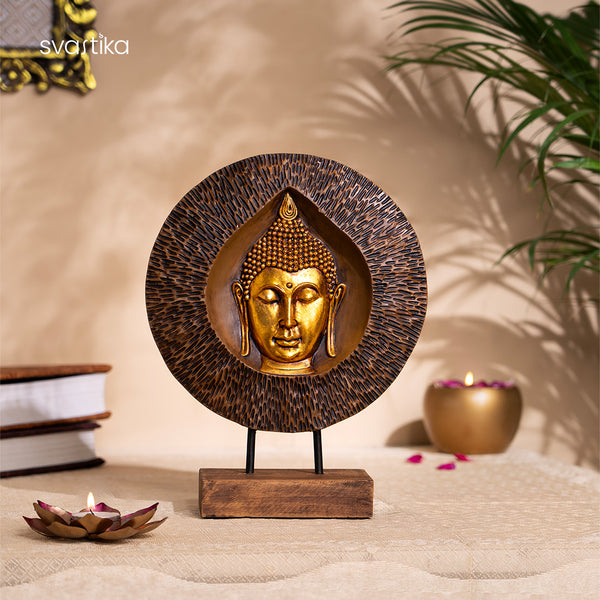
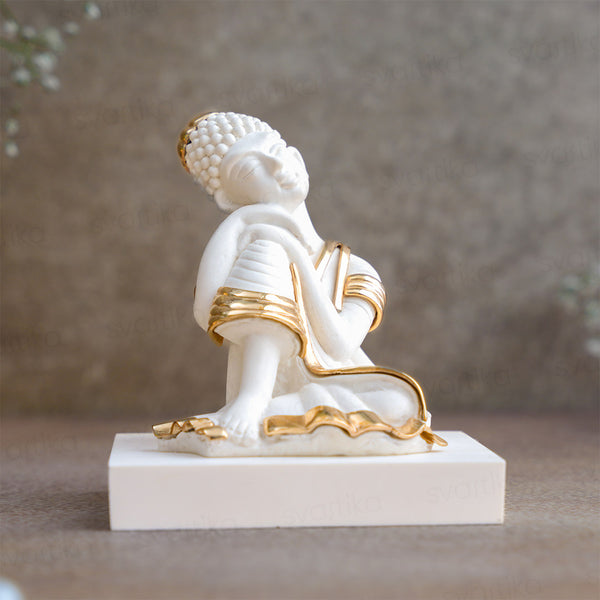
Conclusion
Buddha Purnima is more than just a festival; it’s a powerful reminder of Gautama Buddha’s timeless teachings on compassion, mindfulness, and the path to inner peace. We’ve explored how this sacred day marks Buddha’s birth, enlightenment, and Mahaparinirvana, and why it holds deep spiritual meaning for millions worldwide. Celebrated across India and many countries abroad, it unites people in reflection, kindness, and community.
As Buddha Purnima 2025 approaches, take a moment to pause, reflect, and reconnect with the values of peace and compassion. Whether it’s through meditation, charity, or simply being kind, let Buddha’s wisdom guide your actions.
Wishing you and your loved ones a peaceful, mindful, and blessed Happy Buddha Purnima 2025!
Frequently Asked Questions (FAQ) About Buddha Purnima 2025
1. When was Gautama Buddha born?
He was born in 563 BCE in Lumbini, Nepal, as Prince Siddhartha before renouncing royalty to seek enlightenment.
2. Which God is worshipped on Buddha Purnima?
Lord Buddha is revered not as a god, but as a spiritually awakened teacher whose wisdom continues to guide millions.
3. What should you not do on Buddha Purnima?
Avoid meat, alcohol, violence, and negative thoughts. The day is for peace, reflection, kindness, and spiritual discipline.
4. Why is Buddha Purnima on a full moon?
Because Buddha’s birth, enlightenment, and death (Mahaparinirvana) all occurred on full moon days of the Vaisakh month.
5. How is it celebrated in India and abroad?
With prayers, meditation, temple visits, and charity. It’s widely observed in India, Sri Lanka, Thailand, Myanmar, and beyond.


